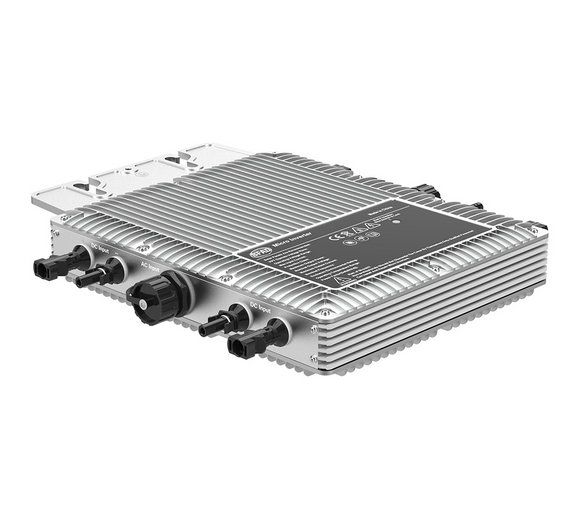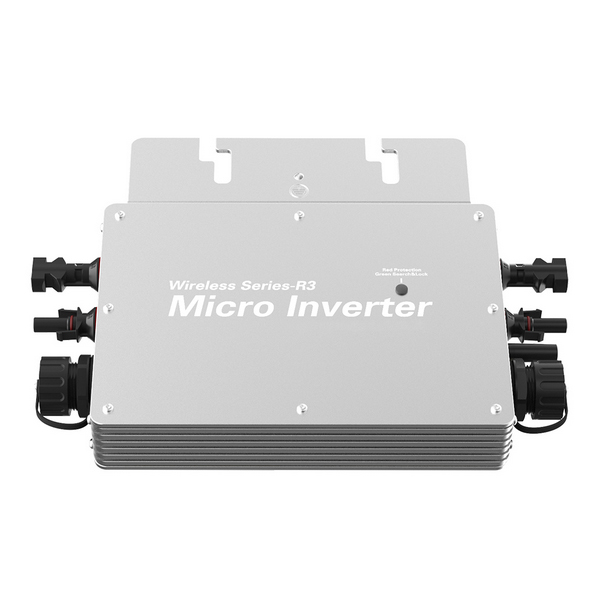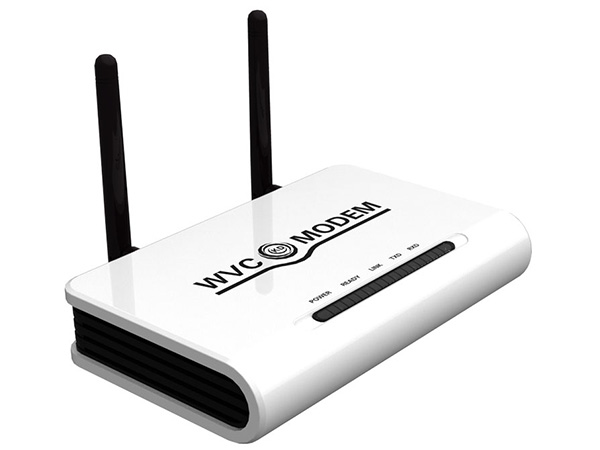Internet of Things
The Internet of Things (IOT) refers to real-time collection of any information sensors, radio frequency identification technology, global positioning system, infrared sensors, laser scanners and other devices and technologies that require monitoring, connection, and interaction The object or process of collecting various required information such as sound, light, heat, electricity, mechanics, chemistry, biology, location, etc., through various possible network access, to realize the ubiquitous connection of objects and objects, objects and people , To realize the intelligent perception, recognition and management of objects and processes. The Internet of Things is an information carrier based on the Internet and traditional telecommunications networks. It allows all ordinary physical objects that can be independently addressed to form an interconnected network.
definition
The Internet of things (IoT, Internet of things) is the "Internet of Things Connected". It is an extended and expanded network based on the Internet. It combines various information sensing devices with the Internet to form a huge network that can be realized at any time , Any place, the interconnection of people, machines and things.
The Internet of Things is an important part of the new generation of information technology. The IT industry is also called: Pan-interconnection, which means that things are connected and everything is connected. Therefore, "The Internet of Things is the Internet of Things". This has two meanings: first, the core and foundation of the Internet of Things is still the Internet, which is an extended and expanded network based on the Internet; second, its user end extends and extends to any item and item to carry out information Exchange and communication. Therefore, the definition of the Internet of Things is to use radio frequency identification, infrared sensors, global positioning systems, laser scanners and other information sensing equipment to connect any item to the Internet according to an agreed protocol for information exchange and communication to achieve the right A network for intelligent identification, positioning, tracking, monitoring and management of items.
origin
The concept of the Internet of Things first appeared in the book "The Road to the Future" by Bill Gates in 1995. In "The Road to the Future", Bill Gates has mentioned the concept of the Internet of Things, but it was limited by wireless networks, hardware and sensing equipment. The development of China has not attracted the attention of the world.
In 1998, the Massachusetts Institute of Technology in the United States creatively put forward the idea of the "Internet of Things" called the EPC system at that time.
In 1999, the American Auto-ID first proposed the concept of "Internet of Things", which was mainly based on item coding, RFID technology and the Internet. In the past in China, the Internet of Things was called a sensor network. The Chinese Academy of Sciences started the research on sensor networks as early as 1999, and has achieved some scientific research results and established some applicable sensor networks. In the same year, the International Conference on Mobile Computing and Networks held in the United States proposed that "the sensor network is another development opportunity facing mankind in the next century."
In 2003, the US "Technology Review" proposed that sensor network technology will be the top ten technology that will change people's lives in the future.
On November 17, 2005, at the World Summit on the Information Society (WSIS) in Tunisia, the International Telecommunication Union (ITU) released the "ITU Internet Report 2005: Internet of Things", which formally put forward the concept of "Internet of Things". The report pointed out that the ubiquitous "Internet of Things" communication era is coming, and all objects in the world, from tires to toothbrushes, from houses to paper towels, can be actively exchanged through the Internet. Radio frequency identification technology (RFID), sensor technology, nanotechnology, intelligent embedded technology will be more widely used.
feature
The basic characteristics of the Internet of Things From the perspective of communication objects and processes, the information interaction between things and people and things is the core of the Internet of Things. The basic characteristics of the Internet of Things can be summarized as overall perception, reliable transmission and intelligent processing.
Overall perception-can use radio frequency identification, two-dimensional code, smart sensors and other perception devices to sense and acquire various types of information about objects.
Reliable transmission-through the integration of the Internet and wireless networks, real-time and accurate transmission of object information for information exchange and sharing.
Intelligent processing—use various intelligent technologies to analyze and process the data and information that are sensed and transmitted to realize intelligent monitoring and control. According to the above characteristics of the Internet of Things, combined with the viewpoint of information science, around the flow of information, the functions of the Internet of Things to process information can be summarized:
(1) The function of obtaining information. It mainly refers to the perception and recognition of information. The perception of information refers to the perception and sensitivity to the state of the properties of things and their changing methods; the recognition of information refers to the ability to express the state of things felt in a certain way.
(2) The function of transmitting information. It is mainly the link of information sending, transmission, receiving, etc., and finally the task of transferring the acquired state information and the way of change from one point in time (or space) to another point, which is often referred to as the communication process.
(3) The function of processing information. Refers to the process of information processing. The use of existing information or perceived information to generate new information is actually the process of making decisions.
(4) The function of effect information. Refers to the process by which information is ultimately effective. There are many forms of expression. The more important thing is to always keep the object in a pre-designed state by adjusting the state of the object and its transformation method.。
Key technology
Radio Frequency Identification Technology
When it comes to the Internet of Things, one has to mention the Radio Frequency Identification (RFID) technology that has attracted much attention in the development of the Internet of Things. RFID is a simple wireless system consisting of an interrogator (or reader) and many transponders (or tags). The tag is composed of a coupling element and a chip. Each tag has a unique electronic code for the expansion entry, which is attached to the object to identify the target object. It transmits radio frequency information to the reader through the antenna, and the reader is the device to read the information. RFID technology allows items to "speak". This gives the Internet of Things a feature that is traceability. That is to say, people can grasp the exact location of the object and its surrounding environment at any time. According to estimates by a retail industry analyst at Sanford C. Bernstein, this feature brought about by the Internet of Things RFID can save Wal-Mart USD 8.35 billion each year, most of which are the labor costs saved by not having to manually check the bar codes of the goods. . RFID has helped the retail industry solve the two major problems of out-of-stock and wastage (products lost due to theft and disruption of the supply chain). Now, for theft alone, Wal-Mart has lost nearly $2 billion a year.
Sensor network
MEMS is the abbreviation of Micro-Electro-Mechanical Systems. It is an integrated micro device system composed of micro sensors, micro actuators, signal processing and control circuits, communication interfaces and power supplies. Its goal is to integrate the acquisition, processing and execution of information to form a multi-functional micro-system and integrate it into a large-scale system, thereby greatly improving the automation, intelligence and reliability of the system. It is a more versatile sensor. Because MEMS has given ordinary objects new life, they have their own data transmission channels, storage functions, operating systems and specialized applications, thus forming a huge sensor network. This allows the Internet of Things to monitor and protect people through objects. In the case of drunk driving, if a miniature sensor is implanted in both the car and the car ignition key, when the driver who drank alcohol takes out the car key, the key can detect a scent of alcohol through the smell sensor. It immediately informs the car to "pause starting" via a wireless signal, and the car will be at rest. At the same time, "command" the driver's mobile phone to send text messages to his relatives and friends to inform the driver of his location and remind them to deal with it as soon as possible. Not only that, in the future, clothes can "tell" the washing machine how much water and washing powder are the most economical; the folder will "check" what important documents we forgot to bring; the food and vegetable labels will tell customers whether "you" is really "green" Safety". This is the result of being "materialized" in the world of the Internet of Things.
M2M system framework
M2M is the abbreviation of Machine-to-Machine/Man, which is a networked application and service centered on the intelligent interaction of machine terminals. It will enable the object to achieve intelligent control. M2M technology involves five important technical parts: machines, M2M hardware, communication networks, middleware, and applications. Based on the cloud computing platform and intelligent network, it can make decisions based on the data obtained by the sensor network, and change the behavior of the object for control and feedback. Take the smart parking lot as an example. When the vehicle enters or leaves the antenna communication area, the antenna uses microwave communication to exchange two-way data with the electronic identification card. The relevant information of the vehicle is read from the electronic vehicle card and displayed on the driver card. Read the relevant information of the driver, automatically identify the electronic car card and driver card, and determine whether the car card is valid and the legitimacy of the driver card, and check the lane control computer to display the license plate number and driving corresponding to the electronic car card and driver card one-to-one The lane control computer automatically stores the information about the passing time, vehicle and driver in the database. The lane control computer judges whether it is a normal card, an unauthorized card, no card or an illegal card based on the data read. Make corresponding responses and prompts. In addition, the elderly at home wear watches embedded with smart sensors. Children in other places can check whether their parents’ blood pressure and heartbeat are stable through their mobile phones at any time. In the smart house, when the owner goes to work, the sensor automatically turns off the water, electricity, doors and windows, and tells the owner regularly. The mobile phone sends a message to report the safety situation.
cloud computing
Cloud computing aims to integrate multiple relatively low-cost computing entities into a perfect system with powerful computing capabilities through the network, and use advanced business models to allow end users to obtain services with these powerful computing capabilities. If computing power is compared to power generation capacity, then the shift from the ancient stand-alone power generation mode to the centralized power supply mode of modern power plants is like the shift from the stand-alone computing mode that everyone is accustomed to now to the cloud computing mode, and the "cloud" is like a power plant, with a stand-alone power plant. Unparalleled powerful computing power. This means that computing power can also be circulated as a commodity, just like gas, water, and electricity. It is easy to access and low in cost, so that users do not need to equip themselves. Unlike electricity that is transmitted through the grid, computing power is transmitted through various wired and wireless networks. Therefore, a core concept of cloud computing is to continuously improve the processing capacity of the "cloud" and continuously reduce the processing burden of the user terminal, and finally simplify it into a simple input and output device, and enjoy the powerful computing of the "cloud" on demand Processing power. The perception layer of the Internet of Things acquires a large amount of data and information, and after it is transmitted through the network layer, it is placed on a standard platform, and then processed by high-performance cloud computing, and the data is endowed with intelligence, so that it can be finally converted into useful information for end users .
Application
The application field of the Internet of Things involves all aspects. The application in the field of infrastructure such as industry, agriculture, environment, transportation, logistics, and security has effectively promoted the intelligent development of these areas, and made the limited resources more reasonable use and distribution, thus Improve the efficiency and benefit of the industry. Applications in household, medical and health, education, finance and service industries, tourism and other fields closely related to life have greatly improved in terms of service scope, service methods and service quality, greatly improving people’s Quality of life; In the field of national defense and military, although it is still in the research and exploration stage, the impact of Internet of Things applications should not be underestimated, ranging from satellites, missiles, aircraft, submarines and other equipment systems to individual combat equipment The embedding of Internet of Things technology has effectively improved military intelligence, informatization, and precision, and greatly improved military combat effectiveness. It is the key to future military reforms.
smart transportation
The application of Internet of Things technology in road traffic is relatively mature. With the increasing popularity of social vehicles, traffic congestion and even paralysis have become a major problem in cities. Real-time monitoring of road traffic conditions and timely transmission of information to drivers, allowing drivers to make timely travel adjustments, effectively alleviating traffic pressure; automatic road toll collection system (ETC) is set up at highway intersections, eliminating the need for import and export card pickup and return Time, improve the efficiency of vehicles; the positioning system is installed on the bus, can understand the bus route and arrival time in time, passengers can determine the trip according to the route, avoiding unnecessary time wastage. In addition to increasing traffic pressure, parking difficulties have also become a prominent problem. Many cities have launched smart roadside parking management systems, which are based on cloud computing platforms, combined with Internet of Things technology and mobile payment technology, to share Parking space resources to improve parking space utilization and user convenience. The system can be compatible with mobile phone mode and radio frequency identification mode. Through the mobile phone APP software, it can realize timely understanding of parking space information and parking space location, make reservations in advance and realize the payment and other operations, which largely solves the problem of "difficult parking and parking "The problem.
Smart home
Smart home is the basic application of the Internet of Things in the home. With the popularization of broadband services, smart home products involve all aspects. There is no one in the house. You can use the mobile phone and other product clients to remotely operate the smart air conditioner, adjust the room temperature, and even learn the user's habits, so as to realize the fully automatic temperature control operation, so that the user can enjoy the ice at home in the hot summer. The comfort brought by coolness; the smart bulb can be switched on and off, and the brightness and color of the bulb can be adjusted through the client; the socket has built-in Wifi, which can realize the remote control socket to turn on and off the current regularly, and even monitor the power consumption of the equipment and generate the power consumption chart Let you know the electricity usage at a glance, arrange resource usage and expenditure budget; intelligent weight scale, monitor exercise effect. Built-in advanced sensors that can monitor blood pressure and fat mass, and the default program makes health recommendations based on physical conditions; smart toothbrushes are connected to the client for reminders of brushing time and brushing position, and can produce charts based on the data of brushing, and the health of the oral cavity; smart camera , Window sensors, smart doorbells, smoke detectors, smart alarms, etc. are all indispensable security monitoring equipment for the family. You can go out in time to check the real-time status of any corner of the home at any time and place, and any security risks. The seemingly cumbersome home life has become easier and more beautiful because of the Internet of Things.
Public safety
In recent years, global climate abnormalities have frequently occurred, and the suddenness and harm of disasters have further increased. The Internet can monitor environmental insecurity in real time, prevent in advance, warn in real time, and take timely response measures to reduce the threat of disasters to human lives and property. . The University of Buffalo in the United States proposed a deep-sea Internet project as early as 2013. Specially processed sensing devices are placed in the deep sea to analyze underwater related conditions, marine pollution prevention, seabed resource detection, and even tsunamis. Reliable early warning. The project was successfully tested in local lake water and provided a basis for further expansion of the scope of use. The use of the Internet of Things technology can intelligently perceive various index data such as the atmosphere, soil, forest, and water resources, which plays a huge role in improving the human living environment.




